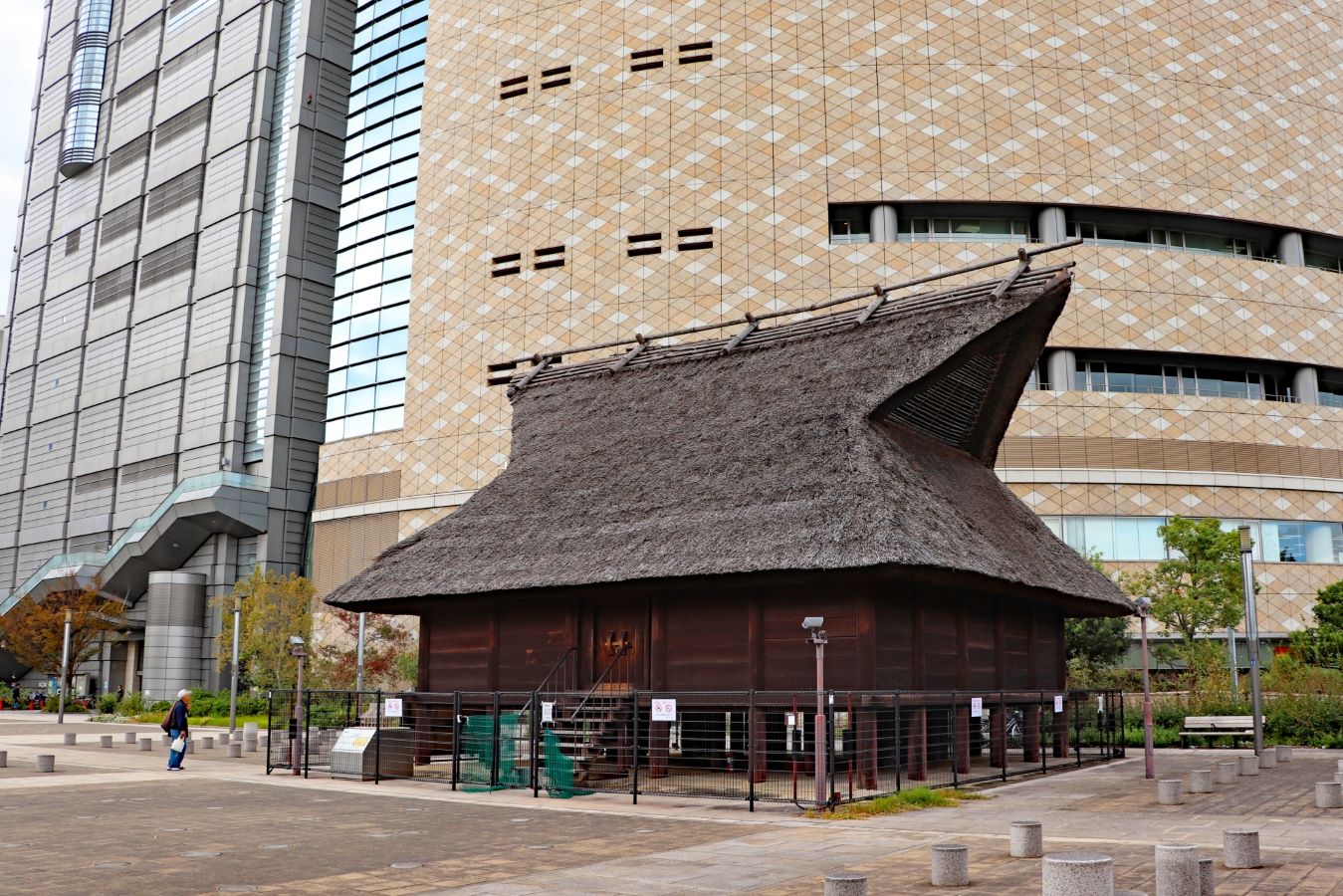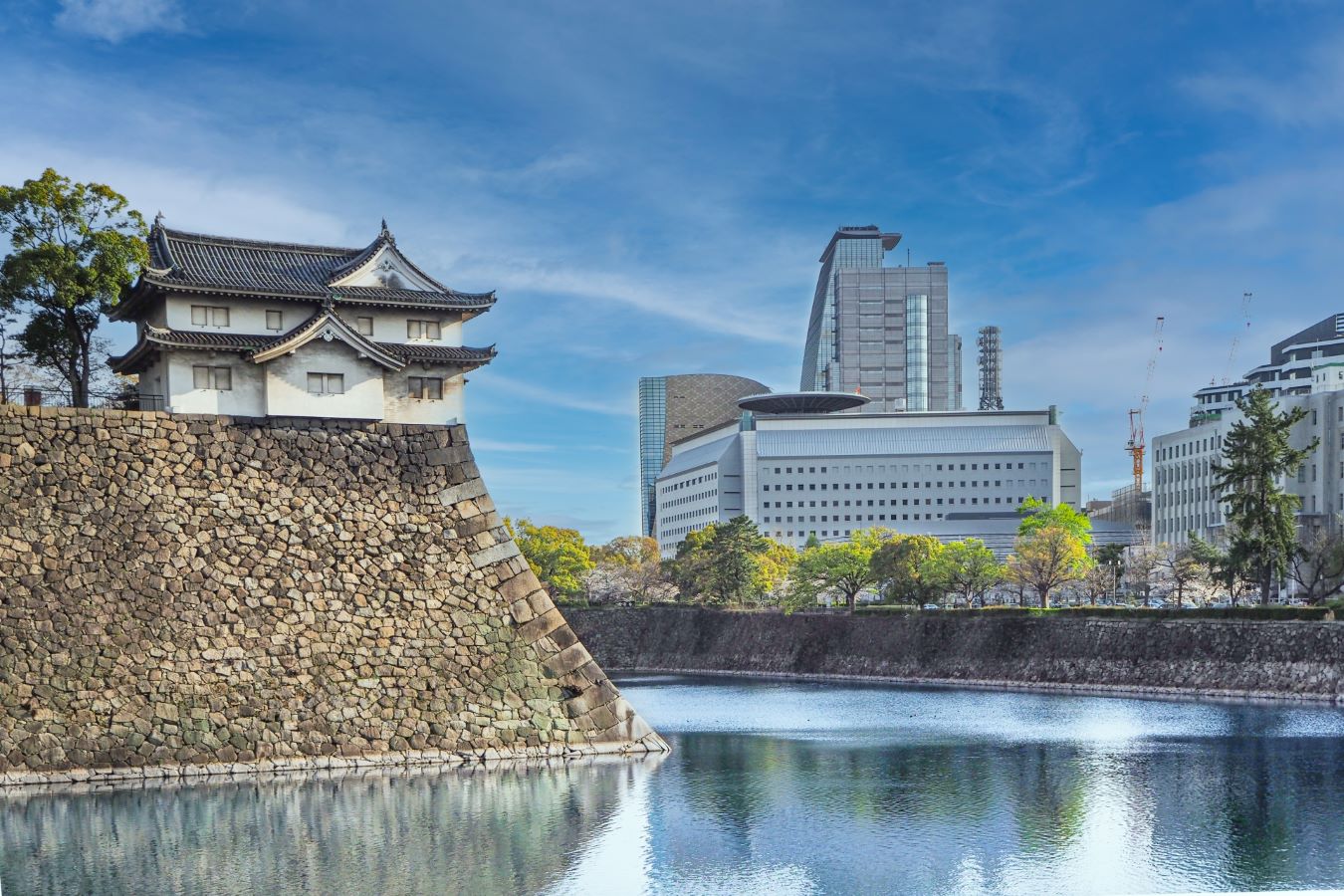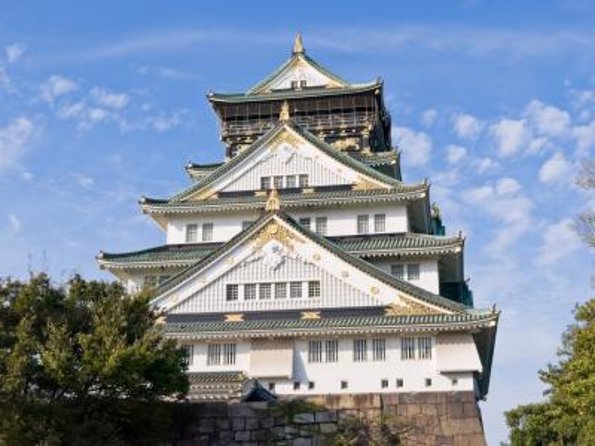The Osaka Museum of History is a must-visit attraction for anyone interested in the rich history and culture of Japan. Located in just a short walk from Osaka Casle, the museum opened its doors in 2001 and has since become a popular destination for tourists and locals alike. The museum is housed in a 13-story building, which includes ten floors aboveground and three below. The permanent exhibit space spans four whole floors 7-10, each of which is devoted to a specific time period.
The museum’s exhibits cover the history of Osaka from ancient times to the present day. Visitors can expect to see a wide variety of artifacts, including pottery, weapons, and clothing, as well as interactive displays and multimedia presentations.
One of the highlights of the museum is a life-sized replica of the Naniwa Palace, which was built in the 7th century and served as the residence of the Emperors of Japan.
History of the Museum

The Osaka Museum of History opened in Chūō-ku, Ōsaka, Japan in 2001. The project architects were César Pelli & Associates and Nihon Sekkei. It is adjoined by an atrium to the NHK Osaka Broadcasting Center, which was designed by the same architects and built at the same time. The former Osaka City Museum closed earlier the same year.
Over four floors, the museum exhibits visually oriented displays that chronicle the city’s history, beginning in ancient times when Osaka served as Japan’s first capital and site of the Naniwa Palace and ending with exhibits on the city’s bustling shopping arcades of the early Showa Period.
The museum is located near the Castle park, east of the downtown area. It retells 1,400 years of history and back to the times when the city was named Naniwa-kyo and was the capital of Japan. The gallery was inaugurated in a modern building and offers a visual exhibition suitable for a younger audience.
Since its establishment, the Osaka Museum of History has welcomed millions of visitors who come to learn about the rich cultural heritage of Osaka. The museum’s exhibits are curated with great attention to detail, and the use of multimedia technology makes the experience engaging and interactive.
Exhibits and Collections
The Osaka Museum of History has a broad collection of objects, models, full-scale reconstructions, and videos that chronicle the city’s history, beginning in ancient times when Osaka was known as Naniwa. The museum’s exhibits are visually oriented and are suitable for both children and adults alike. Here are some of the highlights of the museum’s exhibits:
- The Naniwa Palace Site
- The Ancient City of Naniwa
- The Medieval City of Osaka
- The Edo Period City of Osaka
- The Modern City of Osaka
The museum’s permanent exhibition, “Naniwa-Osaka: The History of Osaka,” is divided into eight zones, each covering a different era of the city’s history. The exhibits include models, dioramas, and interactive displays that bring the history of Osaka to life. Visitors can walk through a full-scale reconstruction of the Naniwa Palace Site, which was the center of political power in ancient Japan.
The museum also has a rotating schedule of special exhibitions that focus on specific aspects of Osaka’s history. For example, the current exhibition, “Exhibition of a Banker’s Collection: Focusing on Modern Paintings of Kyoto and Osaka,” showcases modern paintings from the collection of a banker who was active in Kyoto and Osaka during the early 20th century. The exhibition runs from January 25th to March 21st, 2023.
Facilities and Services
The Osaka Museum of History offers a range of facilities and services to enhance your visit. Here are some of the highlights:
- Free entry: Visitors can enter the museum for free by showing their transportation pass.
- Audio guide: For an additional fee, visitors can rent an audio guide to learn more about the exhibits.
- Gift shop: The museum has a gift shop where visitors can purchase souvenirs and books related to Osaka’s history.
- Cafeteria: The museum’s cafeteria serves a variety of Japanese dishes and snacks, as well as coffee and tea.
- Wheelchair accessibility: The museum is fully accessible for visitors with disabilities, with elevators and ramps throughout the building.
In addition to these facilities, the museum also offers guided tours for groups and school classes. These tours must be reserved in advance, and are available in Japanese, English, and other languages upon request.
Visiting Information

The Osaka Museum of History is a must-visit destination for anyone interested in learning about the history of Osaka. Here are some essential details to make your visit as smooth as possible:
Location and Hours
The museum is located in Chuo-ku, Osaka, adjacent to the NHK building and across the street from Osaka Castle. The closest station is Tanimachi 4-chome Station on the Osaka Metro Tanimachi or Chuo lines, and it is only a five-minute walk from the station. The museum is open daily from 9:30 am to 5:00 pm, with the last entry at 4:30 pm. The museum is closed on Tuesdays, or the following Wednesday when Tuesday is a national holiday.
Ticket Prices
The admission fee for the museum is ¥600 for adults and ¥400 for college and high school students. Children under 15 years old are admitted for free. There are also discounts available for groups of 20 people or more.
Facilities and Services
The Osaka Museum of History offers a range of facilities and services to make your visit as comfortable and enjoyable as possible. These include:
- Wheelchair rental
- Free Wi-Fi
- Gift shop
- Cafeteria
- Audio guide rental (available in English, Chinese, Korean, and Japanese)
Tips for Visitors
Here are some tips to help you make the most of your visit to the Osaka Museum of History:
- Plan to spend at least two hours at the museum to see everything.
- Consider renting an audio guide to learn more about the exhibits.
- Wear comfortable shoes, as there is a lot of walking involved.
- Check the museum’s website for any special exhibitions or events that may be taking place during your visit.
- Take advantage of the museum’s location near Osaka Castle and explore the castle grounds before or after your visit.
Events and Activities
The Osaka Museum of History hosts various events and activities throughout the year, catering to visitors of all ages and interests. Here are some of the highlights:
- Special Exhibitions: The museum regularly hosts special exhibitions that showcase different aspects of Osaka’s history and culture. These exhibitions often feature rare artifacts, interactive displays, and multimedia presentations, making them both educational and entertaining.
- Guided Tours: Visitors can join guided tours of the museum to learn more about Osaka’s history and architecture. The tours are available in Japanese, English, Chinese, and Korean, and are led by knowledgeable and friendly guides.
- Hands-On Workshops: The museum offers a variety of hands-on workshops where visitors can try their hand at traditional crafts and activities. Some of the workshops include calligraphy, tea ceremony, and kimono dressing.
- Lectures and Talks: The museum occasionally hosts lectures and talks by experts in various fields, covering topics such as art, history, and architecture. These events are a great way to deepen your knowledge of Osaka and Japan.
- Seasonal Events: The museum celebrates various seasonal events throughout the year, such as cherry blossom viewing in spring and moon viewing in autumn. These events often include special exhibitions, performances, and food stalls.
Be sure to check the museum’s website or ask at the information desk for the latest schedule of events and activities.
The Sum Up
The Osaka Museum of History is a must-visit destination for anyone interested in learning about the rich history of Osaka. The museum offers a unique experience that takes visitors on a journey through the city’s past, from its early beginnings as Naniwa-no-miya to its modern-day status as one of Japan’s most vibrant and dynamic cities.
Visitors to the museum will be impressed by the quality and variety of exhibits on display. The museum’s visually oriented exhibits, including several large models, provide a fascinating insight into Osaka’s history, culture, and traditions. The museum also offers visitors the opportunity to learn about the city’s role in Japan’s political, economic, and cultural development over the centuries.




